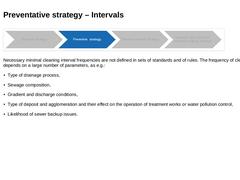
|
(Image: Arrow Preventive strategy) Necessary minimal cleaning interval frequencies are not defined in sets of standards and of rules. The frequency of cleaning depends on a large number of parameters, as e.g.: -
Type of drainage process,
-
Sewage composition,
-
Gradient and discharge conditions,
-
Type of deposit and agglomeration and their effect on the operation of treatment works or water pollution control,
-
Likelihood of sewer backup issues.
|
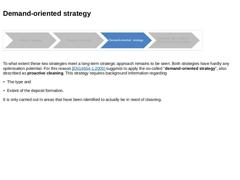
|
(Image: Arrow Demand-oriented strategy) To what extent these two strategies meet a long-term strategic approach remains to be seen. Both strategies have hardly any optimisation potential. For this reason [EN14654-1:2005] suggests to apply the so-called “demand-oriented strategy”, also described as proactive cleaning. This strategy requires background information regarding It is only carried out in areas … |
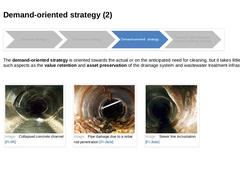
|
(Image: Arrow Demand-oriented strategy) The demand-oriented strategy is oriented towards the actual or on the anticipated need for cleaning, but it takes little account of such aspects as the value retention and asset preservation of the drainage system and wastewater treatment infrastructure. |
(Image: Collapsed concrete channel) |
(Image: Pipe damage due to a rebar rod penetration) |
(Image: Sewer line incrustration) |
|
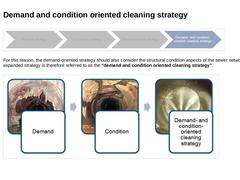
|
(Image: Arrow Demand- and condition oriented cleaning strategy) For this reason, the demand-oriented strategy should also consider the structural condition aspects of the sewer network. This expanded strategy is therefore referred to as the “demand and condition oriented cleaning strategy”. (Image: Demand and condition oriented cleaning strategy) |
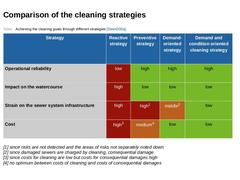
|
(Table: Achieving the cleaning goals through different strategies) |
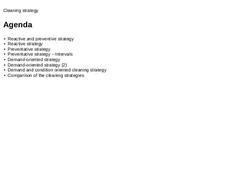
|
|
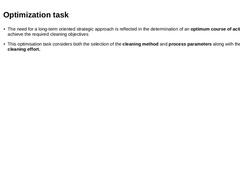
|
(Image: Picto Optimisierung) |
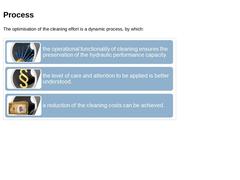
|
The optimisation of the cleaning effort is a dynamic process, by which: (Image: Optimisation of the cleaning effort) |
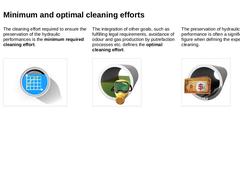
|
The cleaning effort required to ensure the preservation of the hydraulic performances is the minimum required cleaning effort. The integration of other goals, such as fulfilling legal requirements, avoidance of odour and gas production by putrefaction processes etc. defines the optimal cleaning effort. The preservation of hydraulic performance is often a significant target figure when defining the expense of cleaning. (Image: Picto Hydraulisch) |
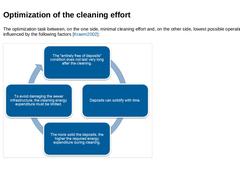
|
The optimization task between, on the one side, minimal cleaning effort and, on the other side, lowest possible operating problems is influenced by the following factors [Kraem2002]: (Image: Optimization of the cleaning effort) |
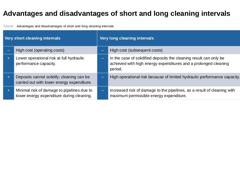
|
(Table: Advantages and disadvantages of short and long cleaning intervals) |
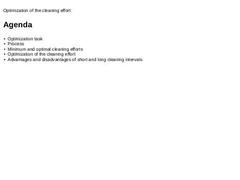
|
|
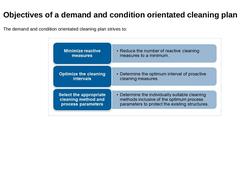
|
The demand and condition orientated cleaning plan strives to: (Image: Demand and condition orientated cleaning plan) |
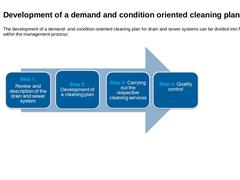
|
The development of a demand- and condition-oriented cleaning plan for drain and sewer systems can be divided into four steps within the management process: ![]()
|
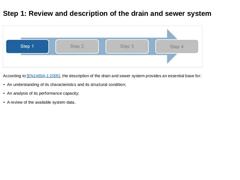
|
(Image: Arrow Step 01) According to [EN14654-1:2005], the description of the drain and sewer system provides an essential base for: -
An understanding of its characteristics and its structural condition;
-
An analysis of its performance capacity;
-
A review of the available system data.
|
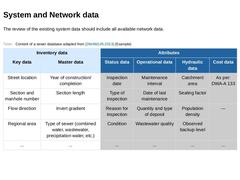
|
The review of the existing system data should include all available network data. (Table: Content of a sewer database adapted from DWA-M 145) |
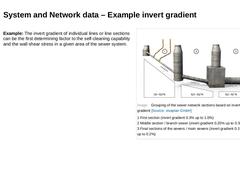
|
Example: The invert gradient of individual lines or line sections can be the first determining factor to the self-cleaning capability and the wall shear stress in a given area of the sewer system. (Image: Grouping of the sewer network sections) |
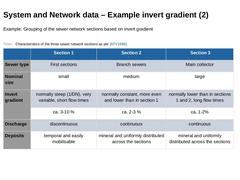
|
Example: Grouping of the sewer network sections based on invert gradient (Table: Characteristics of the three sewer network sections as per ATV 1995) |
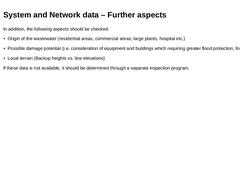
|
In addition, the following aspects should be checked: Origin of the wastewater (residential areas, commercial areas, large plants, hospital etc.) Possible damage potential (i.e. consideration of equipment and buildings which requiring greater flood protection, for example) Local terrain (Backup heights vs. line elevations) (Image: Origin of the wastewater (residential areas, commercial areas, large plants, hospital etc.)) (Image: Possible damage potential (… |

|
The analysis of the previous cleaning methods should additionally be based on interviews with the cleaning staff to document the "on-site knowledge".
Information regarding sections requiring frequent cleaning needs to be documented in incident reports and should include the location, frequency, effect and cause of disturbances. (Image: Exchange of information between planners and operational staff) |
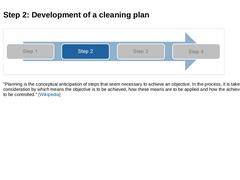
|
(Image: Arrow Step 02) "Planning is the conceptual anticipation of steps that seem necessary to achieve an objective. In the process, it is taken into consideration by which means the objective is to be achieved, how these means are to be applied and how the achieved results are to be controlled." [Wikipedia] |
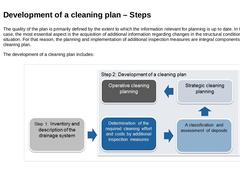
|
The quality of the plan is primarily defined by the extent to which the information relevant for planning is up to date. In this particular case, the most essential aspect is the acquisition of additional information regarding changes in the structural condition and deposit situation. For that reason, the planning and implementation of additional inspection measures are integral components of the cleaning plan. The development of a cleaning plan includes: |
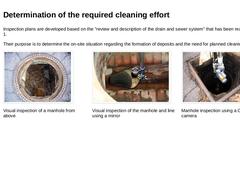
|
Inspection plans are developed based on the "review and description of the drain and sewer system" that has been realised in step 1. Their purpose is to determine the on-site situation regarding the formation of deposits and the need for planned cleaning measures. (Image: Visual inspection of a manhole from above - deposits) Visual inspection of a manhole from above (Image: Visual inspection of the manhole and line using a mirror) Visual inspection of … |
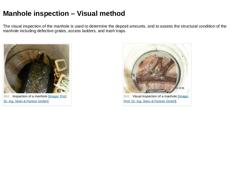
|
The visual inspection of the manhole is used to determine the deposit amounts, and to assess the structural condition of the manhole including defective grates, access ladders, and trash traps. (Image: Inspection of a manhole) (Image: Visual inspection of a manhole) |
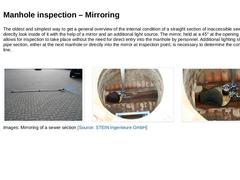
|
The oldest and simplest way to get a general overview of the internal condition of a straight section of inaccessible sewer is to directly look inside of it with the help of a mirror and an additional light source. The mirror, held at a 45° at the opening of the pipe, allows for inspection to take place without the need for direct entry into the manhole by personnel. Additional lighting shun into the pipe section, either at the next manhole or directly … |